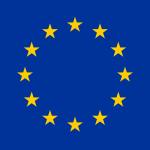16 Aug US Bank Secrecy Act: What AML Professionals Need to Know
US Bank Secrecy Act – As financial crime continues to challenge institutions across the globe, understanding the US Bank Secrecy Act (BSA) has never been more important. Whether you’re part of a multinational bank, a fintech start-up, or a professional services firm, AML (anti-money laundering) compliance is not just a tick-box exercise—it’s about protecting your business and staying on the right side of the law.
The BSA, introduced in 1970, forms the foundation of the United States’ AML regime. It requires financial institutions to help government agencies detect and prevent money laundering, terrorism financing, and other financial crimes. Over time, it’s become a global reference point, influencing regulations far beyond US borders.
In this article, we unpack why the US Bank Secrecy Act remains critical, how it shapes AML practices, and what professionals should know to stay compliant in today’s regulatory environment.
A Brief Overview of the US Bank Secrecy Act
The US Bank Secrecy Act—also known as the Currency and Foreign Transactions Reporting Act—was the first major US legislation aimed at preventing criminals from hiding illicit money in the financial system. It mandates that financial institutions keep records and file specific reports that could help detect and prevent money laundering and tax evasion.
Key reporting obligations include:
- Currency Transaction Reports (CTRs): Filed for any cash transaction exceeding $10,000 in a single business day.
- Suspicious Activity Reports (SARs): Required when suspicious transactions are detected that may involve criminal activity or violate BSA rules.
- Customer Identification Program (CIP): Part of the broader Know Your Customer (KYC) process, requiring institutions to verify the identity of individuals opening accounts.
The BSA applies not only to banks, but also to money service businesses (MSBs), securities firms, insurance companies, and even virtual asset service providers.
Why Non-US Professionals Should Understand the BSA
Even if your company operates outside the United States, it may still be subject to BSA-related expectations. This is particularly true if you:
- Work for a US-based financial institution or its subsidiary
- Engage in US dollar transactions
- Handle cross-border remittances
- Service clients with US connections
- Use US-based correspondent banking networks
Failing to meet BSA standards can lead to serious consequences—including restrictions on operations, fines, and reputational damage.
Additionally, many non-US regulators look to the BSA as a benchmark. This means that understanding the BSA helps professionals align with international best practices and anticipate what regulators elsewhere may require.
How the BSA Influences Global AML Training and Compliance
The influence of the US Bank Secrecy Act stretches well beyond the United States. It has played a key role in shaping international financial crime compliance frameworks, especially through its alignment with the Financial Action Task Force (FATF) recommendations.
For instance:
- The requirement to submit SARs mirrors suspicious transaction reporting obligations in the UK, EU, and elsewhere.
- Enhanced due diligence (EDD) procedures for high-risk customers—including politically exposed persons (PEPs)—are consistent with global AML expectations.
- The concept of ongoing monitoring, introduced under the BSA, has become a standard AML practice worldwide.
Training programmes that include BSA principles are far more effective at preparing professionals to work in regulated environments, particularly those dealing with cross-border transactions or multinational clients.
Common Challenges With BSA Compliance
Although the BSA has been updated several times (notably under the USA PATRIOT Act and more recently the Anti-Money Laundering Act of 2020), some of the challenges it presents remain consistent:
- Complex Reporting Requirements: Knowing when and how to file SARs and CTRs can be confusing, especially for smaller firms or new compliance teams.
- Data Management: Institutions must maintain detailed records for five years, which requires solid systems and controls.
- Keeping Up With Regulatory Updates: US authorities regularly update guidance and enforcement priorities. Missing these can leave institutions exposed.
- Resource Constraints: Smaller firms or those outside the US may struggle to dedicate time and staff to understanding and implementing BSA compliance fully.
This is why quality AML training that explains how the BSA works in practical terms is so valuable.
The Role of Online AML Training in BSA Compliance
Online AML courses that cover the US Bank Secrecy Act offer professionals a structured and accessible way to understand their responsibilities. But not all training is created equal.
At KYC Lookup, our AML courses are designed with clarity and real-world application in mind. We explain how SARs and CTRs should be handled, how risk assessments tie into your reporting obligations, and what the US regulators expect from your policies and procedures.
Our video tutorials break down complex BSA topics into digestible lessons, and every module includes real-world scenarios to help you apply the knowledge in your role—whether you’re in compliance, operations, legal, or front-line staff.
Why BSA Knowledge is Valuable Across Roles
Understanding the US Bank Secrecy Act is no longer just the job of the compliance officer. Anyone working in finance, law, fintech, or crypto will encounter AML checks and obligations tied to the BSA framework.
Professionals benefit in multiple ways:
- Career Growth: Employers increasingly value candidates who understand global AML laws.
- Risk Reduction: Teams with BSA training are better prepared to prevent breaches or reporting failures.
- Regulatory Confidence: Firms with staff trained in BSA compliance are better positioned in audits and inspections.
If your business operates internationally, BSA literacy isn’t just helpful—it’s essential.
Certification That Proves You’re Ready
Our AML course includes certification that reflects both UK and international standards—including alignment with the US Bank Secrecy Act, FATF guidance, and FCA expectations. The certification is available for immediate download once the course is completed and assessment passed.
Whether you’re upskilling as an individual or training a whole team, our platform provides everything you need to demonstrate your knowledge.
Bringing It All Together
The US Bank Secrecy Act remains a cornerstone of AML compliance—not just in America, but globally. Its principles, reporting requirements, and focus on risk-based controls are echoed across multiple jurisdictions.
Training that includes BSA content equips professionals with the tools to understand red flags, respond appropriately to suspicious activity, and maintain the records and controls regulators expect.
If you’re serious about staying compliant in an interconnected financial system, knowing how the BSA fits into your AML responsibilities is essential.
Explore our AML online courses to see how we bring global standards—like the US Bank Secrecy Act—to life through real examples, expert instruction, and accessible content.




No Comments